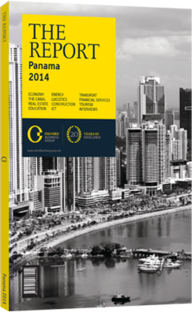OBG talks to Rafael Barcenas, Director-General, Civil Aviation Authority

Interview: Rafael Barcenas
What return do you expect from government investment in regional airport capacity?
RAFAEL BARCENAS: It is difficult to quantify the eventual results at this stage. However, the rationale for each airport is solid. When developing a new airport, you don’t expect to reach peak capacity until 10 years down the road. David, for example, is the second-largest city in the country, and its airport was in need of expansion. We expect there to be substantial growth in regional linkages as there are a large number of expatriates to be served, and since it is the city closest to the agricultural heartland of the country, cargo has a lot of potential.
In Río Hato, on the other hand, our focus is on tourist traffic. We believe that airport will be successful from the start, as the region it will serve is already developed and the customers are in place. Royal Decameron, for example has extensive links with North American markets, and there is talk of charter flights and the like. This airport will bring great benefits to the region, and I expect there to be strong positive economic feedback.
Colón, to take a different case, is focused on cargo and passengers and has the added benefit of having available land around the airport. We are looking at the opportunity of connecting directly with the Colón Free Zone to allow free movement of goods to and from the airport and the zone. The passenger side could also benefit from further integration with the cruise ship industry, which is being developed. The airport builds on Colón’s strengths while providing new opportunities for further growth.
How can the high level of traffic and connectivity growth be maintained?
BARCENAS: Investments in the hub concept, along with strong growth in the number of transit passengers we are serving, will both help to maintain growth. From a regulatory and public sector standpoint, we need to maintain our services. First and foremost, this means short connection times. This is a priority and an issue we have been discussing with the International Air Travel Association, due to changing security demands and rescreening rules.
Tocumen Airport needs to be an interesting place to connect, which means that commercial and retail offering needs to be continuously improved. The south terminal expansion is also key, as it will increase capacity and comfort for connecting passengers.
Another advantage is the “bank” model; there are six banks per day, so effectively there are six times per day where the hubs meet. This allows passengers to choose suitable schedules rather than have travel times dictated by airlines. It has reduced the workload at the airport and increased efficiency, as it avoids intense spikes in traffic throughout the day.
Tourist arrivals spending time in Panama is another area that needs improvement, but this will require a concerted effort from all the stakeholders.
How do you assess the competition Panama City faces from regional aviation hubs?
BARCENAS: Lima and Bogotá are the primary regional rivals. Nonetheless, I believe we enjoy a few important advantages. Firstly, location: we are more or less equidistant from North and South America, so this increases the efficiency of our airlines through lower fuel costs. Airlines are also able to use the same model of aircraft on both northern and southern routes, which decreases travel time.
Panama City is also at sea level, an important aspect when looking at efficiency in aviation. It is important that we continue to attract European carriers to fly to Panama City, as our domestic players have no plans to develop such linkages in the short term. This has important ramifications for our competitiveness as a hub. Consolidation of airlines within Latin America is another aspect to take into account, as mergers have created companies with reach beyond that of Panama’s domestic players.
You have reached the limit of premium articles you can view for free.
Choose from the options below to purchase print or digital editions of our Reports. You can also purchase a website subscription giving you unlimited access to all of our Reports online for 12 months.
If you have already purchased this Report or have a website subscription, please login to continue.

